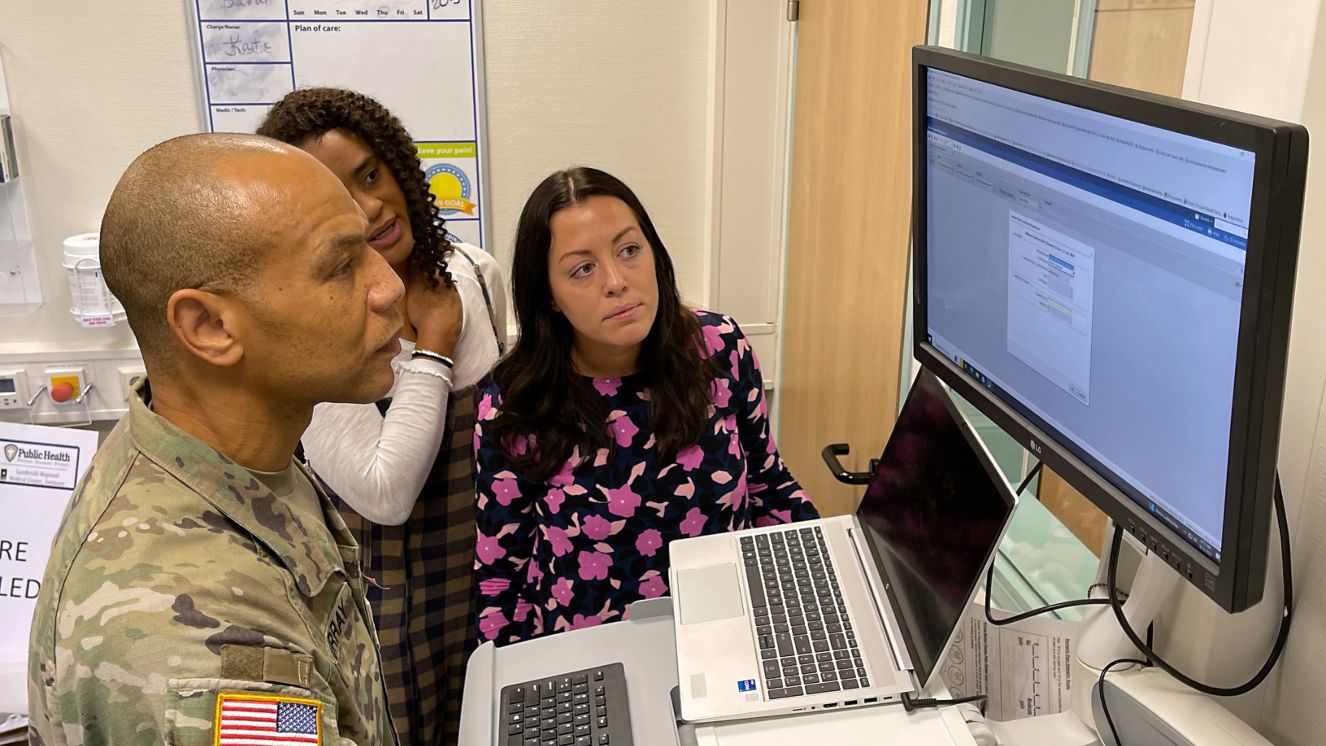YELLOW RIBBON PROGRAM: EVERYTHING VETERANS SHOULD KNOW

Veterans pursuing an education using their Post-9/11 GI Bill benefits may notice that there are times when some costs will still persist. Fortunately, there are options. The Yellow Ribbon Program helps Veterans pay for costs that the Post-9/11 GI Bill won’t cover alone. There are well over 1,000 Yellow Ribbon Schools, and understanding your benefits is the first step in maximizing them. Learn more about how Yellow Ribbon GI Bill recipients are covered, eligibility, and more. Suggested read:Use Your GI Bill Benefits at the American Military University
What Is the Yellow Ribbon Program?
The Yellow Ribbon Program is a benefit managed by the U.S. Department of Veterans Affairs (VA) offering additional education benefits for military Veterans who have served since 9/11. Veterans who receive the Post-9/11 GI Bill (Chapter 33) enjoy benefits that can pay for 100% of the funding needed for a public four-year undergraduate education or other forms of education. There are guidelines that may dictate the number of benefits you can receive under the GI Bill. Veterans who have served three years on active duty since September 11, 2001, will earn the benefit and can transfer benefits to a spouse or children after serving (or agreeing to serve) for 10 years. However, the GI Bill alone can often leave several costs behind. This is where the Yellow Ribbon Program comes in. For schools that are in another country, out of state, or private, or if the Veteran is pursuing a graduate degree, coverage is usually available from this program.
How Does the Yellow Ribbon Program Work?
In collaboration with the VA, Yellow Ribbon Program Schools sign up to accept students using the Post-9/11 GI Bill and Yellow Ribbon benefits. The institution and the VA split the costs that would otherwise be covered by the Veteran and provide an education that’s often free as a result. For you to take advantage of the Yellow Ribbon Program benefits at your preferred school, it must also meet certain requirements. All of the following must be true for the program to be in place at a school:
- It must be an institution of higher learning.
- It must participate in the Yellow Ribbon Program.
- It must not have offered the Yellow Ribbon benefit to more than the maximum number of students in their agreement with the Department of Veterans Affairs.
- You must certify your enrollment with the VA and provide the Yellow Ribbon Program with this information.
VA Yellow Ribbon Benefits
Your Yellow Ribbon grant will provide benefits for 36 months from the new GI Bill. Here’s what you can expect to be covered:
- Tuition and fees.
- Money for housing (if you’re in school more than half the time).
- Up to $1,000 per year for books and supplies.
- Money to help you move from rural areas in pursuit of education to go to school (a one-time payment of $500).
But while these benefits are similar to the GI Bill, the Yellow Ribbon Program takes things a step further:
- Tuition for private schools, out-of-state students, and foreign schools is covered.
- Veterans can have tuition covered for grad school.
- The VA will match contributions of grants, scholarships, and other programs toward fees. Limits apply.
Can You Use Yellow Ribbon Program Without GI Bill?
No, you can’t use the Yellow Ribbon Program without the Post-9/11 GI Bill. The two are connected, and Yellow Ribbon Program eligibility itself depends on a Veteran being provided the maximum benefit rate of the Post-9/11 GI Bill.
How Much Does the Yellow Ribbon Program Cover?
The purpose of the Yellow Ribbon Program is to bridge the gap between all your school expenses and what the GI Bill pays. Up to 100% of the costs for Veterans attending Yellow Ribbon colleges and other schools can be covered, but it depends on your school and what it contributes. For example, let’s say the out-of-state school you want to attend charges $10,000 per year for in-state tuition and fees but $16,000 per year for out-of-state tuition and fees. The VA pays the in-state $10,000 cost under the Post-9/11 GI Bill. The Yellow Ribbon Program contributes to the remainder, matching what the school offers. If the school offers $3,000, then the program matches $3,000, and you’re set. If the school offers $2,000, then the Yellow Ribbon Program matches that for a total of $4,000. You’d be responsible for the remaining $2,000. Note: Your school’s agreement may also state that they’ll contribute only toward degrees at certain colleges or professional schools or only for certain degree levels (such as undergraduate, graduate, or doctoral degrees). It’s important to remember that not all students in the program receive the same amount of funding. Your benefits will likely depend on your student status (undergraduate, graduate, or doctoral) and what type of school you’re attending (college or professional). For example, a school might provide $1,000 for undergraduates, $1,500 for graduate students, and $2,000 for doctoral students. The school might also offer $1,800 for engineering students but $2,500 for nursing students. Also, remember that the Yellow Ribbon Program only covers expenses directly related to your education. It doesn’t provide funding for things that aren’t mandatory, such as:
- Room and board.
- Study abroad (unless your degree program requires it).
- Penalty fees (such as parking tickets, late registration fees, etc.).
Even with some of the limitations established by schools, the Yellow Ribbon Program gives you excellent motivation to pursue a higher-education degree without having to take out significant, soul-crushing student loans.
Yellow Ribbon Program Requirements
According to the Department of Veterans Affairs, you must meet at least one of these requirements to qualify for the Yellow Ribbon Program:
- Served at least 36 months on active duty (either all at once or with breaks in service).
- Received a Purple Heart on or after September 11, 2001, and were honorably discharged after any amount of service.
- Served for at least 30 continuous days (all at once, without a break) on or after September 11, 2001, and were discharged after 60 days with a service-connected disability.
- Are a dependent child using benefits transferred by a Veteran or a service member who has served for at least 36 months on active duty and qualifies at the 100% level.
- Are a Fry Scholar (eligible for the Yellow Ribbon Program on or after August 1, 2018).
Can Dependents Use the Yellow Ribbon Program?
Yes, dependent children of Veterans and active-duty service members can use the Yellow Ribbon Program. The benefits are transferable from the beneficiary to their dependent children pursuing higher education.
What Schools Participate in the Yellow Ribbon Program?
The list of Yellow Ribbon Schools is far, far too long to simply list in this article. However, the VA makes it easy to figure out if a school you’re interested in participates in the Yellow Ribbon Program. Using the VA’s find a Yellow Ribbon School online tool, you can find the best Yellow Ribbon Schools to enroll in for your education. You can even sort results by whether the school provides the maximum amount of funding (tuition not covered by the Post-9/11 GI Bill) and whether the institution provides funding to all eligible students. Additionally, you can also see which schools participate in the program by using the VA’s online GI Bill Comparison Tool. When using this tool, be sure to note not just whether your school participates but also the maximum Yellow Ribbon funding amount listed in the results. You don’t have to be a full-time student to participate in the program. Plus, if your school continues to participate in the program each year, it must automatically continue to offer the same Yellow Ribbon benefits to you the next year, as long as you:
- Make acceptable progress toward completing your program (according to your school).
- Stay enrolled in the school without a break.
- Still have money left in your Post-9/11 GI Bill benefits.
How To Apply for Yellow Ribbon Program
If you’re eligible for Yellow Ribbon benefits and want to apply, we’ve got you covered. Here are the steps to get set up:
- Apply for Post-9/11 GI Bill benefits, and if you qualify, you’ll receive your Certificate of Eligibility (COE).
- Submit your COE to your school’s certifying official, to the financial aid department, to the military liaison, or to another appropriate office. Tell them you want to apply for your school’s Yellow Ribbon Program.
- Wait for a decision. During this time, your school will decide the following:
- Whether it has already enrolled the maximum number of first-come, first-served students for the program period.
- The amount of funding you’ll receive. Your school decides this amount by adding up tuition and mandatory fees and then subtracting any aid you’ve received from other sources — such as scholarships, grants, and your Post-9/11 GI Bill tuition payment. Your school will apply the Yellow Ribbon Program benefit to this final amount.
- Follow up with your school. You’ll be notified whether or not it has accepted you into the program and how much money you’ll receive for tuition, but it doesn’t hurt to keep tabs on the process so you can better plan your budget and future.
The Yellow Ribbon Program Makes Education Affordable
The Yellow Ribbon Program and Post-9/11 GI Bill are great benefits for the military community. These are well-deserved benefits that can help elevate the educational opportunities for you and your family. If you need more assistance with using the program, the VA can help with the guide on its website. Read next:This University in Pennsylvania Is One of the Best Schools for Veterans
BY BUDDY BLOUIN
Buddy Blouin is a Contributing Writer at VeteranLife.com
Buddy Blouin is a Contributing Writer at VeteranLife.com



